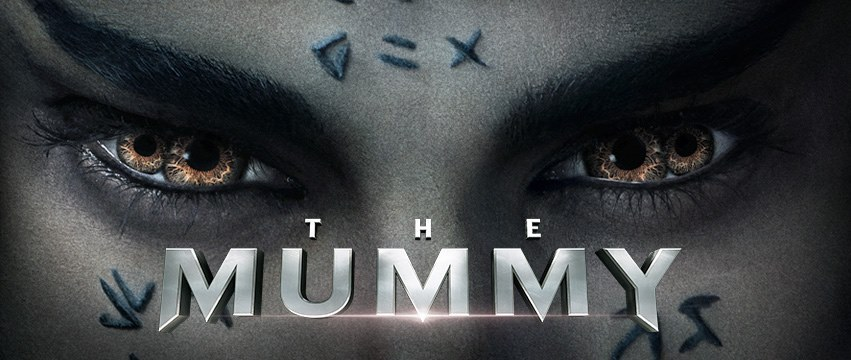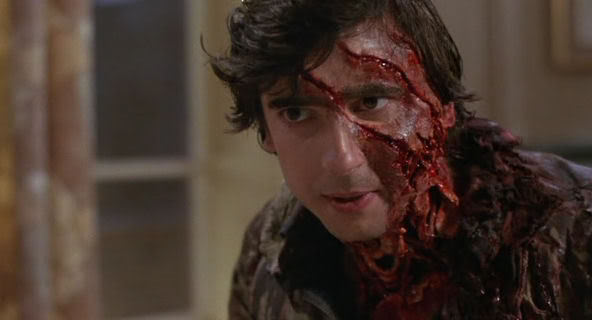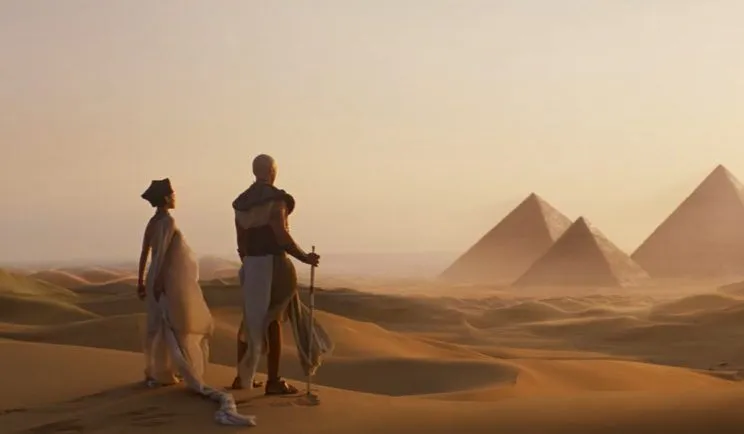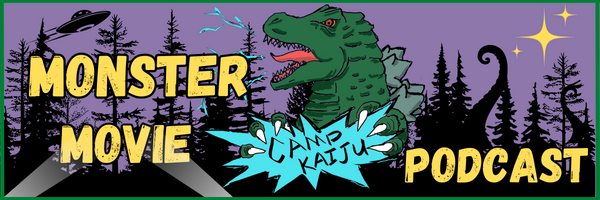
This Mummy is too slick for its own good. Despite the considerable talent involved, (i.e. Tom Cruise and screenwriter David Koepp) the film projects only a sanitized version of a classic horror tale. Seemingly every aspect of production appears touched by the cold hand of corporate Hollywood. The visual palette is bland, the script is wildly non-sensical, and the performances are phoned-in to a disappointing level. But why precisely does this Universal horror picture deserve the critical panning? A closer examination of elements is warranted, along with a compare and contrast with other, more renowned, horror movies such as An American Werewolf in London and yes, Stephen Sommers’ 1999 The Mummy. Such comparisons are valid because it is the essence of these films that The Mummy (2017) itself seeks to emulate with disastrous results.
Director: Alex Kurtzman
Screenplay: David Koepp, Dylan Kussman, Christopher McQuarrie, Alex Kurtzman, Jon Spaihts, Jenny Lumet
Producers: Sarah Bradshaw, Sean Daniel, Alex Kurtzman, Chris Morgan
Cinematography: Ben Seresin
Editing: Andrew Mondshein, Paul Hirsch, Gina Hirsch
Music: Brian Tyler
Select Cast: Tom Cruise, Annabelle Wallis, Sofia Boutella, Jake Johnson, Courtney B. Vance, Russell Crowe
Runtime: 110 minutes
Country of Origin: USA, China, Japan
US Release: June 9, 2017
The Mummy begins with two flashbacks: one, to medieval England where a Crusader is entombed with a mysterious red gemstone. Next, further back in time to ancient Egypt where the would-be pharaoh Ahmanet (Boutella), is passed over for promotion when her father welcomes a baby boy into the family. A revengeful Ahmanet then murders her father, the baby, and makes a deal with the Egyptian god of disorder, Set, to imbue herself with demonic powers. As punishment for her crimes, she is mummified alive and buried as far from Egypt as possible. That gemstone, meanwhile, is the key to her restoring her powers.
Following the set-up, the movie begins its main trajectory in present-day Iraq. Two U.S. soldiers Nick (Cruise) and Chris (Johnson) are on the sly as treasure hunters when they inadvertently discover the cavernous tomb of Ahmanet. Once she is released from her tomb, all hell breaks loose as the action shifts to London for the remainder of the story; and the red stone serves as the MacGuffin for both Ahmanet and our protagonists.
One notable detour is when Nick is shown the inner workings of Prodigium; this is a secret society dedicated to protecting the world from dark, supernatural forces. Its leader is none other than Dr. Jekyll (Crowe) who, while explaining to Nick that he has been doomed by the mummy’s curse, is unable to contain his own evil alter-ego, Mr. Hyde. After this, the final act of The Mummy devolves into a protracted action sequence in which Nick manages to escape the mummy’s wrath and defeat the evil.

Those familiar with Universal’s rich legacy of horror, may be familiar with the now infamous release of 2017’s Mummy. How it was teed up by the studio as the start of a new cinematic universe in the vein of Disney’s Marvel Cinematic Universe (MCU); the bandwagon every major studio was jumping on following the massive success of Disney’s model. Universal’s answer was the so-called “Dark Universe”; an interconnected series of movies that would assemble such classic characters as the Bride of Frankenstein, the Invisible Man, and Dr. Jekyll into an Avengers-esque super franchise. Publicity photos were taken and the hype-machine was in full swing. In many ways, it was a monster kid’s dream come true; that Universal would finally update its iconic IP for the 21st century. Alas, it never stood a chance.
The Mummy (2017) was doomed from the start precisely because of the mold it was trying to fit; namely, the goal of appealing to as broad a market as possible. Upon release, it grew clear that such a formula may work for technicolor superheroes, but not black-and-white monsters. In the rush for mass appeal, Universal diluted the very essence that made Karl Freund’s The Mummy (1932) and Stephen Sommers’ The Mummy (1999) hits: an unsettling slow-burn of frightful mysticism in the former, and a gruesome adventure of steamy romance in the later. Kurtzman’s The Mummy, by comparison, lacks just about any of that.
All this to say, that despite the ignominious reputation the film has garnered, the idea behind its genesis has merit. Any “Dark Universe” inarguably has precedent in the backlog of Universal Studios; it was the studio’s original horror cycle that proved cinema’s first interconnected franchise, beginning and ending with Bela Lugosi’s Dracula in Dracula (1931) and Abbott and Costello Meet Frankenstein (1948). (Arguments to include The Creature from the Black Lagoon [1954] are valid, but in the foundational run of 1930s-40s Gothic-based horrors, the atomic-age Gill-Man is an outlier.) Notwithstanding Creature, this proto-Dark Universe featured other films (and their respective sequels) like Frankenstein (1931) and The Wolf Man (1944). With such a deep catalog, who can blame Universal for attempting these movies’ resurrection? Who can blame Universal for capitalizing on its own historical cinematic universe?

In this respect, The Mummy (2017) represents a tantalizing “what if?”; had it been handled in a manner becoming its predecessors (i.e. committing to a singular tonal vision) then we would be having a different conversation. As it were, Universal did not approach The Mummy (2017) as the fine-tipped horror film it should have been, but rather with the broad strokes of a mass market action movie; this approach did not work because the classic monsters are inherently niche characters and not universally known, much less adored. Universal’s next classic monster reimagining, was the low-budget, yet legitimately scary The Invisible Man (2020), led by Blumhouse Productions; and its success further magnifies The Mummy’s (2017) abject failure to understand its core audience.
Two key elements can be analyzed as examples of this misguided direction: futile attempts at comedy and the unconvincing motivations of the Mummy herself. Regarding comedy, it is clear that Kurtzman’s ideal movie would have zipped along with charming banter from our hero and his sidekick. Sommers achieved this goal with his 1999 rendition; Brendan Fraser shines as the lovable smart aleck, Rick O’Connell. The screenplay by Sommers taps into this certain pulp archetype (a la Indiana Jones) in a way that equally benefits the supporting cast. Compared to the writers of 2017’s Mummy, Sommers understands what makes the pulp adventure charming; it is less about “jokes” and more about situational escapades. We find ourselves smiling throughout Fraser’s antics because the set pieces are imaginative and wonderfully dangerous; and what he does provides the sense of humor. Sure, Rick is good for a wisecrack, but he knows he can’t joke his way out of Imhotep’s clutches. Meanwhile, The Mummy‘s (2017) script-by-committee presents the opposite. Cruise only tries to charm his way out of danger, and in doing so, gets on your nerves. Kurtzman and company also tear a page from An American Werewolf in London (1981) that borderlines plagiarism.
In the popular horror-comedy, written and directed by John Landis, the protagonist and his friend are attacked by a werewolf. The main character, David, survives but his friend, Jack, is killed. Landis presents a fun twist in that as David proceeds on his “carnivorous lunar activities”, Jack accompanies him as a progressively rotting corpse. The now iconic relationship is one of spiritual guidance, as Jack simultaneously represents the devil and angel on David’s shoulders. Without a doubt, Jack provides much comedic relief; but again, as with Rick O’Connell, the sense of humor stems from more than mere one-liners. It is instead rooted in two best buds growing very uncomfortable with each other. No such relationship exists between Cruise’s Nick and Johnson’s Chris; this despite the fact that Kurtzman recreates the exact situation as Landis did in An American Werewolf, with Chris as the reanimated companion. But unlike David and Jack, Chris and Nick are presented as two people quite comfortable with the new arrangement; it is a direction that fosters zero sense of fun.


Likewise, the characters’ motivations in The Mummy (2017) are just as bungled. However talented Sofia Boutella may be, she is given the impossible task of making an unlikable character sympathetic. Sympathizing with the monster’s plight – however heinous – is arguably the key to a memorable monster movie. Again, Sommers’ The Mummy proves a point. Its villain, Imhotep, seeks to rule the world but only as a means to save his love. Yes, they were both murderers in ancient Egypt, but their love nonetheless burns with an age-old desire. In contrast, while Ahmanet is also executed for treachery, her end-goal upon 21st century resurrection is to destroy the world in revenge… for being a convicted murderer. Without a complicating factor like love (as simple as it sounds), this motive is entirely unsympathetic and hopelessly uninteresting. In fact, the laziness of the screenwriters to make Ahmanet an intriguing character is revealed in an exchange between she and Cruise’s Nick; he asks how she could have killed her own family and her answer is a flat “it was a different time”. This line reveals nothing about why someone would justify such an egregious crime.
Ultimately, it is easy to pick apart The Mummy (2017); it is poorly written, acted, directed, and shot. If only this movie were so-bad-it’s-good. But no, it would need a heart to achieve the status of camp classic. Rather, it inspires little imagination and represents corporate Hollywood at its blandest. These missteps, however, allow observant film artists to study effective movie making; after all, you can learn as much from a bad example as a good one. In this regard, The Mummy (2017), should endure as a textbook case of ineptitude.

by Vincent S. Hannam
Don’t miss the next review – enter your email here!
